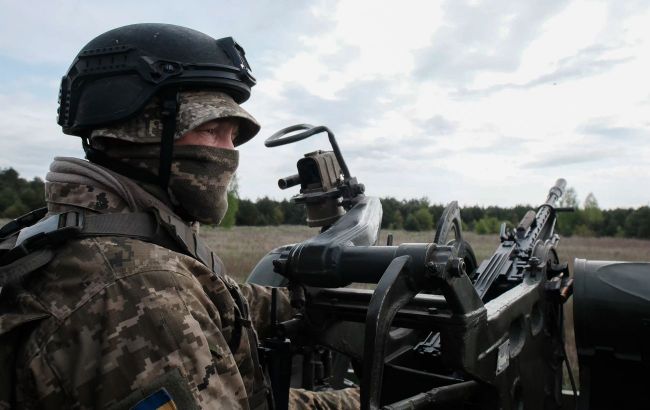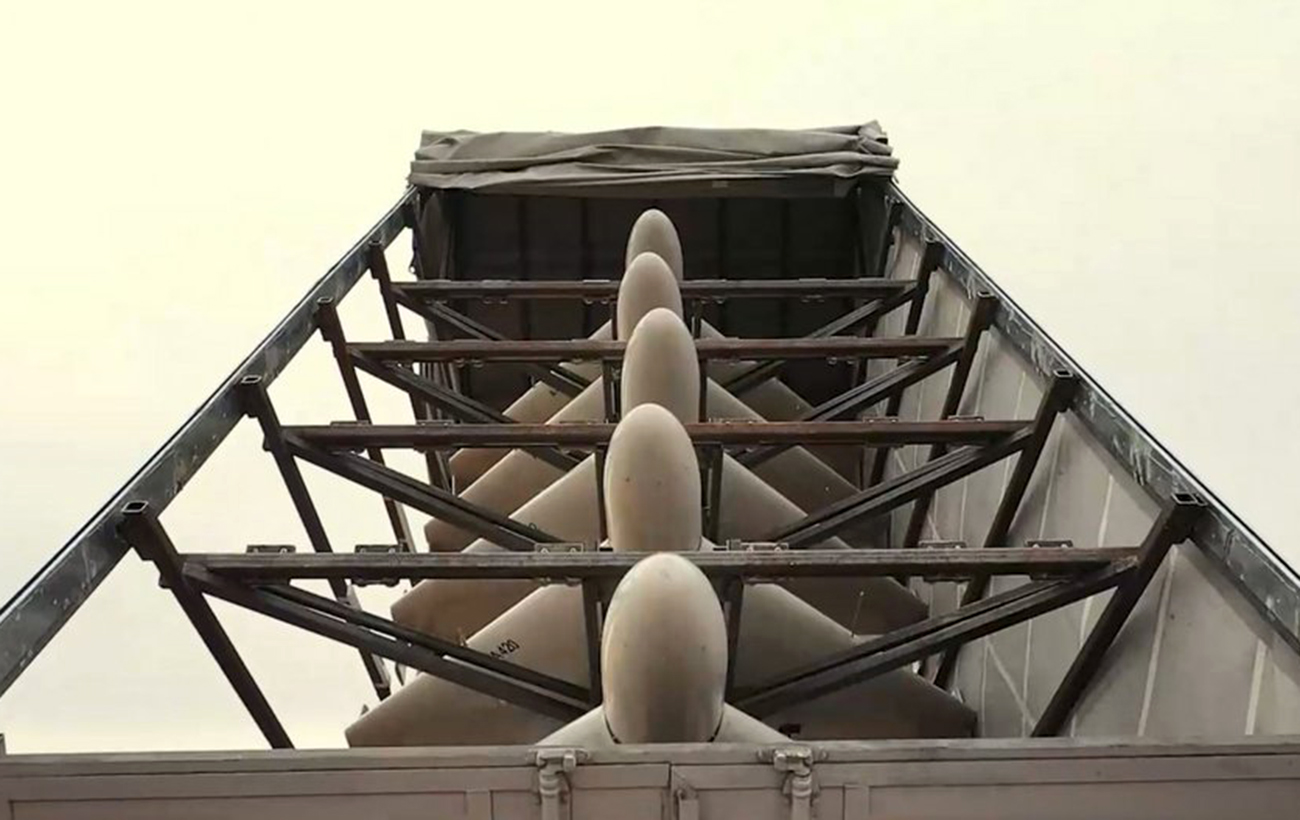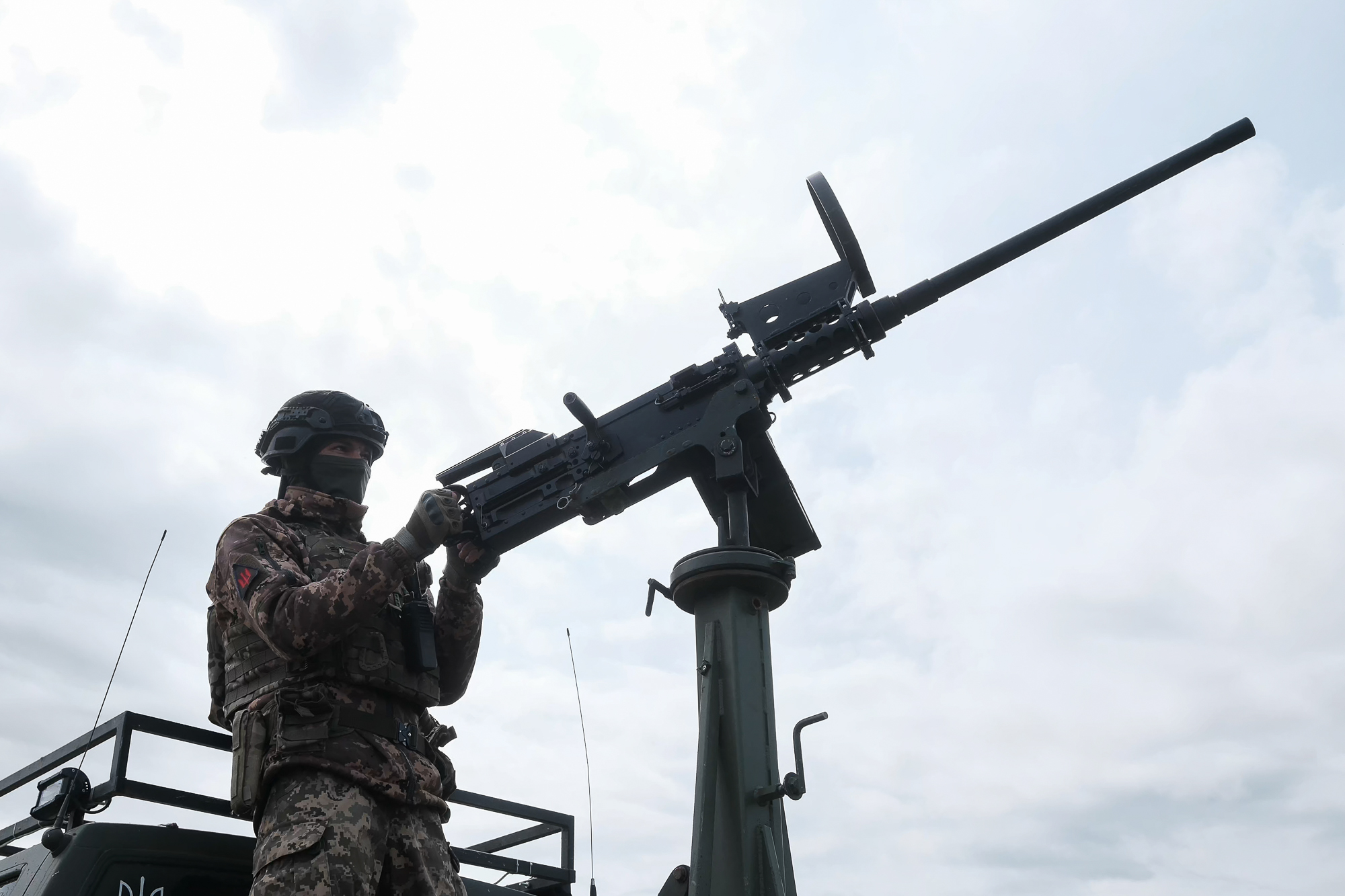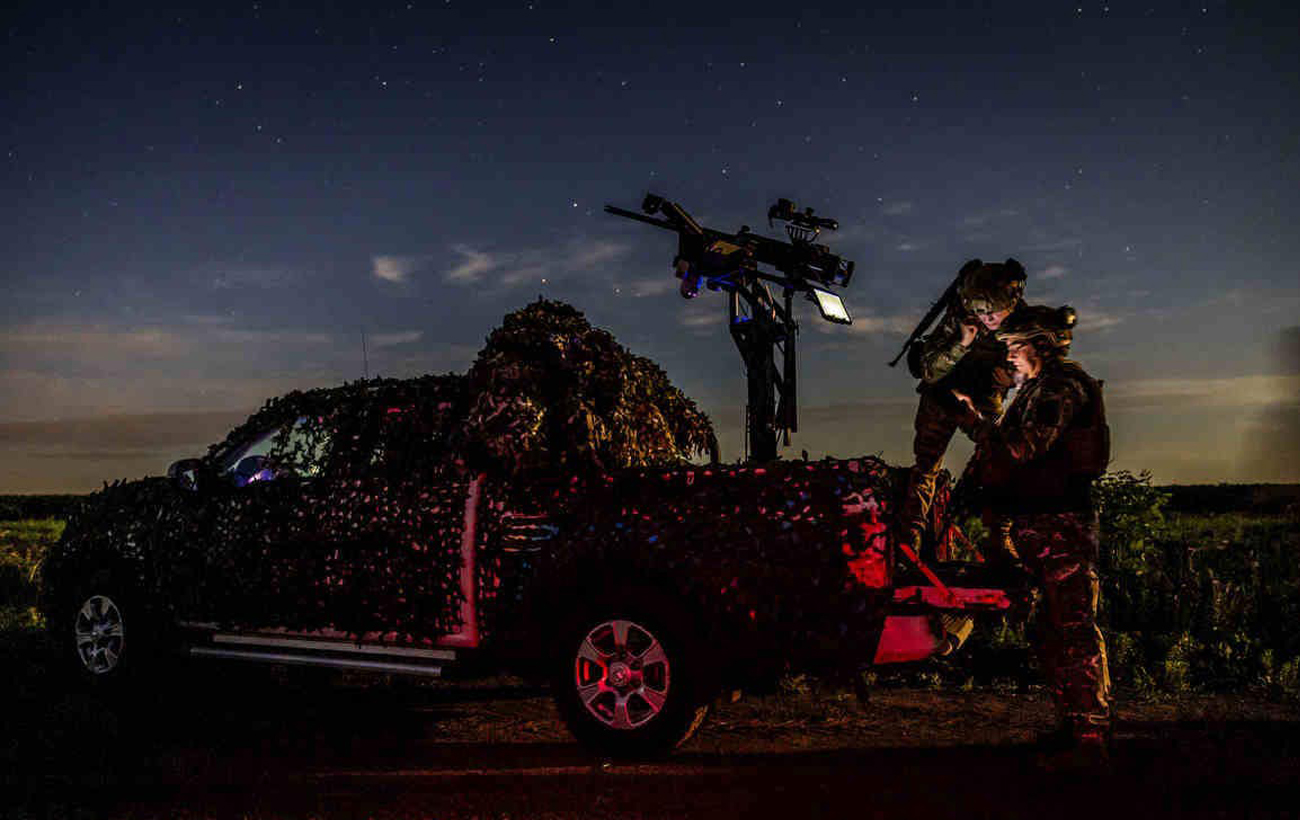New tech, new threat: Inside Russia's upgrade of Iranian drones and Ukraine's countermove
 Ukrainian mobile fire group (photo: Vitalii Nosach/RBC-Ukraine)
Ukrainian mobile fire group (photo: Vitalii Nosach/RBC-Ukraine)
Russia has been firing Iranian Shahed drones at Ukraine every day for almost a year. They are an important component of every massive attack, flying into Ukrainian cities by the hundreds. Why there are suddenly so many drones, why their kill rate has dropped, and who helped Russia upgrade the Iranian UAVs is covered in the article by RBC-Ukraine.
Russia struck Ukraine with Iranian drones for the first time a little over six months after the start of the full-scale invasion. The first Shahed-136 drones, which the Russians called Geran, were used near the front line or in the nearest large cities near the front line. The Russian military leadership quickly realized that drones are a relatively cheap tool for massive strikes.
The Shaheds began to be purchased on an industrial scale, and a little later, Russia began to produce them in order not to depend on unstable allies and to increase its arsenal of these weapons. It took Moscow some time to put the Iranian drone on the assembly line and, after testing it in striking, to modernize it.
Regular Russian attacks by Iranian drones began in August 2024. Since then, Shahed drones have been striking Ukrainian cities almost daily. They have become more maneuverable, some of their modifications are faster, and there are now many more of them. Today, an attack by several hundred drones is hardly surprising. The massive Russian strikes on Ukraine on the night of July 9 set a record — Russia launched 728 drones.
To protect the country from Russian drones, the Ukrainian military leadership is trying to come up with a way to respond to the modernization of the Shaheds in a relevant way. Therefore, interceptors are being launched, the number of mobile fire groups is being increased, and other, less obvious methods are being used.
Focus on drones
The Russian military leadership did not immediately appreciate the effectiveness of drones. For a long time, Russia relied on artillery, missiles, and aerial bombs. Multiple launch rocket systems were used for the front line and to terrorize nearby settlements, missiles were used to destroy military and civilian targets, and high-explosive bombs were used as needed. For example, in Mariupol, Russian pilots used high-explosive bombs to destroy residential areas and the Azovstal plant.
During the first months of the full-scale invasion of Ukraine, Russian troops used drones on the front lines, mainly for reconnaissance purposes, and less frequently, ZALA Lancet kamikaze drones. Iranian Shahed-136 drones appeared in Russia's arsenal in September 2022. The Russians purchased a limited batch of these cheap but quite effective drones from Tehran, realized their advantages, and since then, they have become a kind of basis for any strike, especially when it comes to massive attacks on cities.
In June 2023, Russia began assembling the first Iranian Shaheds, according to an investigation by The Washington Post. In the following months, the Russians actively increased their production of drones. Their goal was to produce thousands of drones by 2025, and they achieved it.
In order to produce such a large number of these Shahed-type drones, the Kremlin built a large factory in the Alabuga Special Economic Zone for Manufacturing and Industry in the Republic of Tatarstan. The Russians themselves began to call them Geran-2. This name was probably originally invented to conceal the Iranian origin of these drones.
 Shahed-136 (photo: defenceua.com)
Shahed-136 (photo: defenceua.com)
According to information from the Defense Intelligence of Ukraine (HUR), in 2024, Russia produced over 10,000 Gerans and 7,000 Gerberas — so-called decoy drones. In 2025, production increased.
"In 2025, the company plans to increase the production of UAVs. In total, it is planned to manufacture more than 30,000 Geran-2 UAVs and more than 33,000 Gerbera drones," HUR says in a comment to RBC-Ukraine.
In addition, production is increasing at the Izhevsk Electromechanical Plant Kupol, where the Russians plan to manufacture 5,700 Garpia-A1 strike drones, which are identical in design to the Shahed-136. In 2024, according to HUR, more than 3,400 such drones were produced.
Judging by how the Russians began to actively produce various strike drones at some point, it becomes obvious that Moscow has figured out how to reduce the cost of massive strikes on Ukraine. But for a long time, Iranian drones served more as an element of terror than as an effective tool for hitting targets. Therefore, it was decided to modernize the drones.
Development of Shahed
Experts divide the modernization of the Iranian Shahed into two periods. During the first period, the Russians tried to replace the drone's components with parts of their production: they changed the materials for the fuselage, installed additional antennas, installed their control units, and even SIM cards.
Then a Chinese engine was installed in the drone, making it more powerful and able to climb to altitudes where it is difficult to hit with machine guns or mobile air defense systems. In addition, the Russians are actively studying and copying the terrain for more accurate strikes, using reconnaissance drones. Therefore, the Shaheds now fly so low that they again pose certain difficulties for air defense.
In addition, the Shahed began to fly along a more complex trajectory, not from point to point, but with maneuvers, which complicates the work of air defense. But this did not significantly affect the effectiveness of the drone itself — it continued to fly at a maximum speed of 200 km per hour and was quite clumsy. Then, in May 2024, Russian President Vladimir Putin and Defense Minister Andrei Belousov traveled to China. According to some experts, this visit was the starting point for the second phase of the Shahed's modernization.
"I wondered why they went there. I thought maybe it was related to engine replacement, perhaps they were discussing jet engines, because the Russians don't have such small gas turbine engines. And then, sometime in February, reports began to appear that the Shaheds had changed," aviation expert Kostiantyn Kryvolap says in a comment to RBC-Ukraine.
 Ukrainian military personnel shoot down a drone over the Chernihiv region, 2024 (photo: Getty Images)
Ukrainian military personnel shoot down a drone over the Chernihiv region, 2024 (photo: Getty Images)
The first thing that the military mobile fire groups told the expert about was the drone's reaction to the searchlight beam. For the first time, the drone, seeing the beam, picked off the air defense group.
Then, information appeared that the same Shaheds began to perform the function of reconnaissance. First, one drone flies at low altitude, captures information, transmits it, and then a massive attack begins, with dozens of drones flying to the targets. Moreover, the strike drones worked from high altitudes - about 3-4,000 meters, where mobile fire groups can't reach them.
Among the latest major upgrades to the Shahed, the following can be highlighted: drones have become more resistant to electronic warfare thanks to the Kometa-M navigation system, and some drones have been equipped with rotating panoramic cameras that transmit video via network channels. They are equipped with new types of warheads — not only high-explosive, fragmentation-high-explosive, or incendiary, but also cluster and cumulative. Some Shaheds are also equipped with turbojet engines, which increase the drone's speed at the end of its flight path.
In addition, some drones are equipped with artificial intelligence elements, namely an AI module. This system allows the Shahed to analyze visual, thermal, and radar information in real time and make decisions independently if communication with the operator is interrupted. Most importantly, the drone can recognize objects on its own using computer vision algorithms. In other words, it can determine whether it is facing a warehouse, a tower, or a railway junction.
"Quite recently, there was a robotics exhibition in Shenzhou, where most of the exhibits were drones of various types. Ground, surface, even underwater. The Chinese are very experienced in artificial intelligence and surface system control technologies, and they have come a long way. I do not rule out that it was they who allowed the Russians to make these boxes. Because there are no such specialists in Yelabuga by definition. There are just factory-vocational school students who are assemblers, a couple of engineers, and that's it," adds Kryvolap.
After the attack on Ukraine on July 4, Foreign Minister Andrii Sybiha posted a photo of a piece of a downed Shahed drone on social media. One of the parts had a label indicating that it was manufactured in China in May 2025.
"With each passing month, we see more and more Chinese components in Shahed drones. They are becoming a critical mass. Russia is replacing American and European components with Chinese ones, and it is these parts that allow Shaheds to navigate better, overcome electronic warfare, and hit their targets more accurately," says Vladislav Vlasyik, the representative for sanctions policy.
After the military discovered Chinese components in Shaheds, Ukraine imposed sanctions on many Chinese companies. But this is unlikely to stop China's intention to continue helping Russia modernize its drones. This means that Kyiv needs to find a way to respond.
New drones - new methods
Several Western media outlets report that the percentage of Russian drones breaking through Ukrainian air defenses has increased recently. According to their estimates, if earlier this figure was at the level of 10-15%, now it is 15-20%. There are many reasons for this, including massive barrages, which did not exist before, and the modernization of drones. Another important factor is the altitude at which the Russians now raise their drones.
 Mobile fire group (photo: Vitalii Nosach/RBC-Ukraine)
Mobile fire group (photo: Vitalii Nosach/RBC-Ukraine)
In the summer of 2025, Ukraine first started talking about interceptor drones. In July, Reuters reported that Kyiv was ready to invest $6.2 million in the creation and mass production of such drones. They are designed to combat Shaheds and other kamikaze drones that terrorize Ukrainian cities. According to the agency, these interceptors have already passed their first tests, the results of which satisfied the military command.
The interceptor drone itself is relatively inexpensive. At least it is several times cheaper than missiles that can shoot down Iranian drones at high altitudes. The main problem is that there are not yet enough interceptors to effectively counter the Shaheds. And one interceptor is often not enough to destroy a single Russian drone.
In this regard, on July 23, First Deputy Prime Minister for Digital Transformation of Ukraine, Mykhailo Fedorov, announced that Ukraine is ready to contract all the interceptor drones that companies manage to manufacture by the end of the year. According to Ukraine's Defense Minister Denys Shmyhal, his ministry has already signed four contracts for these interceptors worth more than UAH 3 billion (USD 72 million). But it will take time to ramp up production to the point where we have 700 interceptors for every 700 Russian drones (or even twice as many). Ukraine does not have that time, as massive Russian attacks occur regularly.
In addition, time is needed for the so-called combat raid.
"These drones operate as FPV, which means they require operators. To counter the number of suicide drones used in an attack, which fly in swarms, at least two interceptor drones are needed for each suicide drone, and each drone requires an operator. This means that an incredible number of operators must be trained to be able to intercept these drones. And the operators must gain experience," adds Kryvolap.
But for now, given that there are few interceptor drones, the military leadership is operating with what it has. For example, they use electronic jamming devices or shoot down drones from light aircraft.
"There are state-owned aircraft, and there are private ones that take a shooter, search for drones, and shoot them down with a rifle. And the old ones, before reaching their target, descend, and at this stage of the route, it is also possible to engage them," says military expert and former deputy chief of the General Staff of the Armed Forces of Ukraine, Ihor Romanenko, in a comment to RBC-Ukraine.
 Mobile fire group on night duty (photo: Facebook)
Mobile fire group on night duty (photo: Facebook)
Another idea proposed by the Ukrainian military command is to involve the public in the fight against drones. In June, the Cabinet of Ministers approved a pilot project aimed at forming air defense groups based on the DFTG (volunteer formations of territorial communities - ed.). The Ministry of Defense undertakes to train volunteers, provide them with weapons, register them, and pay them money — some MPs are talking about UAH 100,000 for each drone shot down.
In other words, while the military does not have an effective, cheap, and mass-produced tool for systematically combating modernized Shahids, the command, together with the government, is trying to come up with alternative options. Whether they will be effective is difficult to analyze at this point.
***
In the current war, both sides periodically surge ahead, coming up with something new and innovative. Ukrainian troops were the first to use drones en masse on the front lines, gaining time and advantage. But not for long — the Russians are also developing and quickly adapting to new circumstances. As a result, hundreds of drones can be launched regularly from Russia to Ukraine.
Until Russia is ready to attack Ukrainian cities with hundreds of drones every day, Kyiv needs to take the initiative again. Interceptor drones are an effective response to large numbers of Russian suicide bombers, but so far, Ukraine is not playing proactively.

